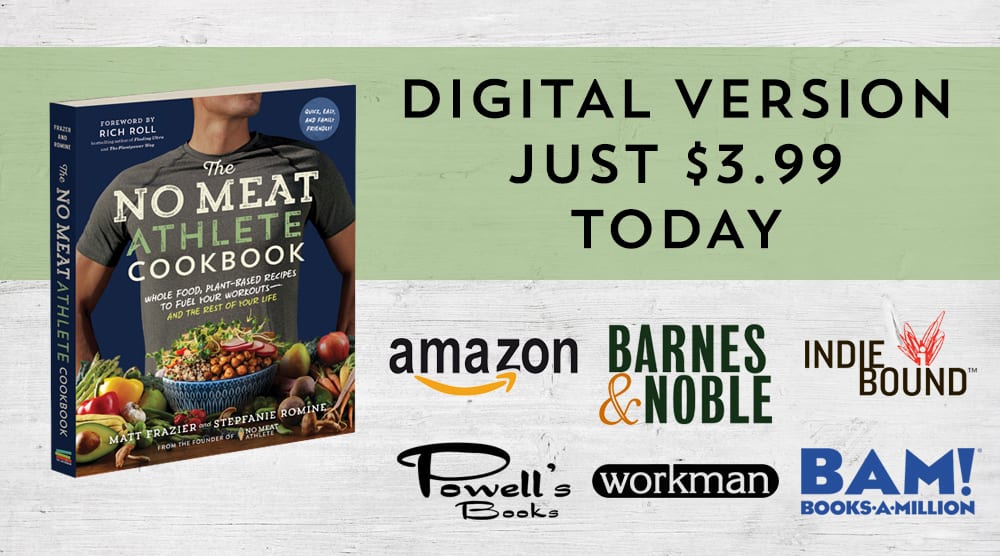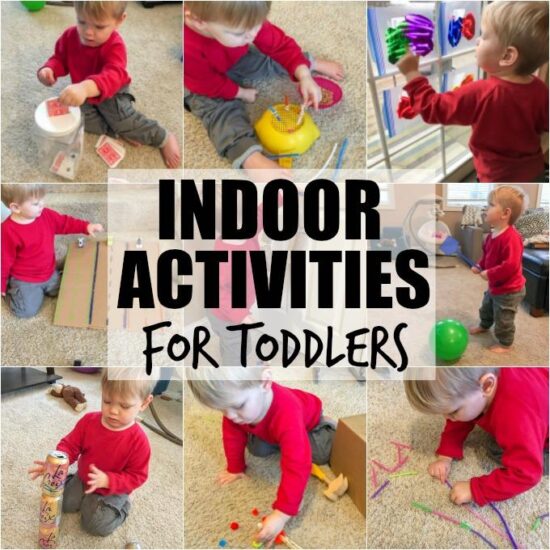
These Indoor Activities For Toddlers are perfect for winter or a rainy spring or summer day and many will help develop fine motor skills. Plus tips to make them harder for pre-school aged kids.
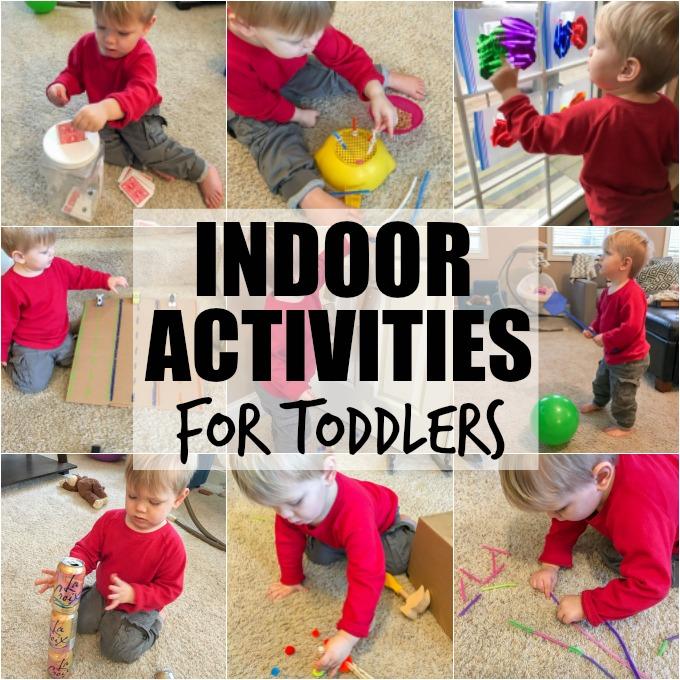
{Originally published Jan 2017}
Hi Friends!
Today we're talking indoor activities for toddlers. It's been almost two years since I shared this post so I thought I'd bring it to your attention again in case you missed it the first time! I'm always looking for fun new activities to do with Squish and a lot of you seem to like when I share them on Instagram so I thought I'd round up some of my favorites to share with you guys!
When I was in middle school, I did a lot of babysitting. I had some sort of babysitting certification from The Red Cross and during that course, they gave us the idea of making an activity kit to bring with you when babysitting. Sure, kids like their own toys, but there's something about new games and activities that is especially exciting and tends to hold their interest longer.
When I was in high school, I had a steady after-school nannying job for a two-year-old (who I just realized has probably no graduated high school and I now feel very old). Anyways, she wasn't allowed to watch any TV and I spent several hours with her every day….so I had to get creative with things to keep her busy.
When I graduated college, I worked at a pre-school for 6 months. Although my classroom was 4-5 year olds, I spent a lot of time in the 2-3 year old classroom as well.
Now, I follow a lot of kid-focused pages on Facebook and Instagram, I browse Pinterest, I read family magazines and am constantly seeing new ideas I want to try.
This post is a roundup of some of my favorite indoor activities for toddlers that I've seen and tried over the years. I've tried them all with Squish over the pas couple years or so and he really enjoys most of them. Note- I took all these pictures on the same day, but I wouldn't advise trying them all out on the same day! Remember the new & exciting part? Save them up and try a couple at a time. We've got several more months of winter ahead of us!
I also included some ways to make them harder. As kids get older, some of the things they could do six months ago are getting too easy….but there are ways to add a bit of a challenge to most of them, to make them more developmentally appropriate for older toddlers and even preschoolers!
A few months ago I placed an Amazon order to stock up on supplies but you could probably find a lot of these at the dollar store as well! Here are (affiliate) links to the ones I bought but there are tons of options
I bought:
- Pipe cleaners
- Clothespins
- Straws
- Golf Tees
- Fly swatters
- Pom poms
- Finger paint
- Balloons
- Popsicle sticks
And here's how I've been using them!
Indoor Activities for Toddlers
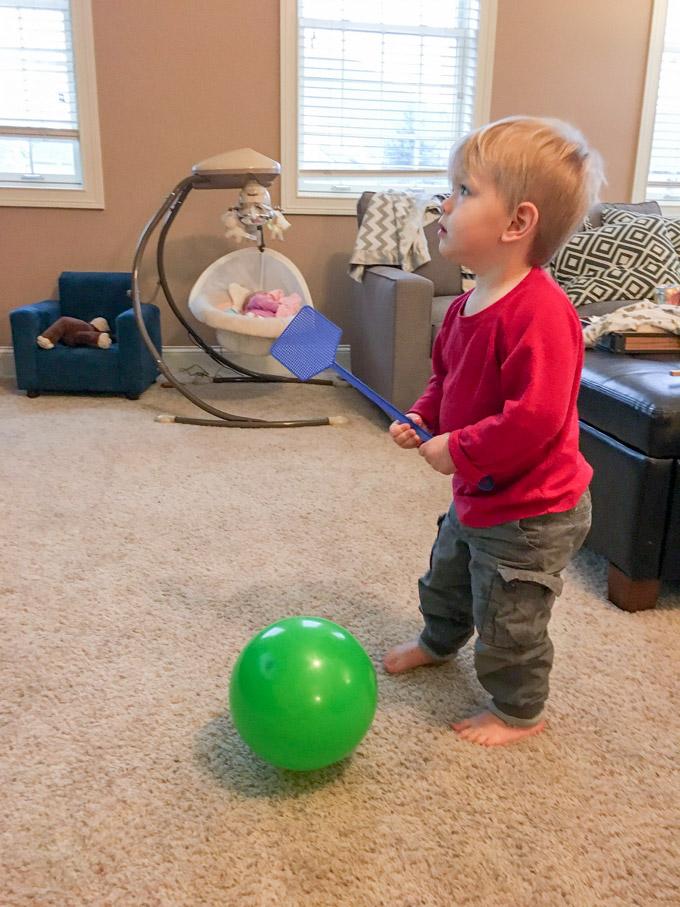
Balloon Hockey
I blow up a couple of balloons, we each grab a fly swatter and go to town hitting them around the room. I let him hit it around for a while and then we also work on hitting it to keep it up in the air.
Make it harder:
- Set up a goal and let them try to score.
- Have a contest to see how long they can keep it from touching the ground.
- Let them try to keep two balloons in the air at once!
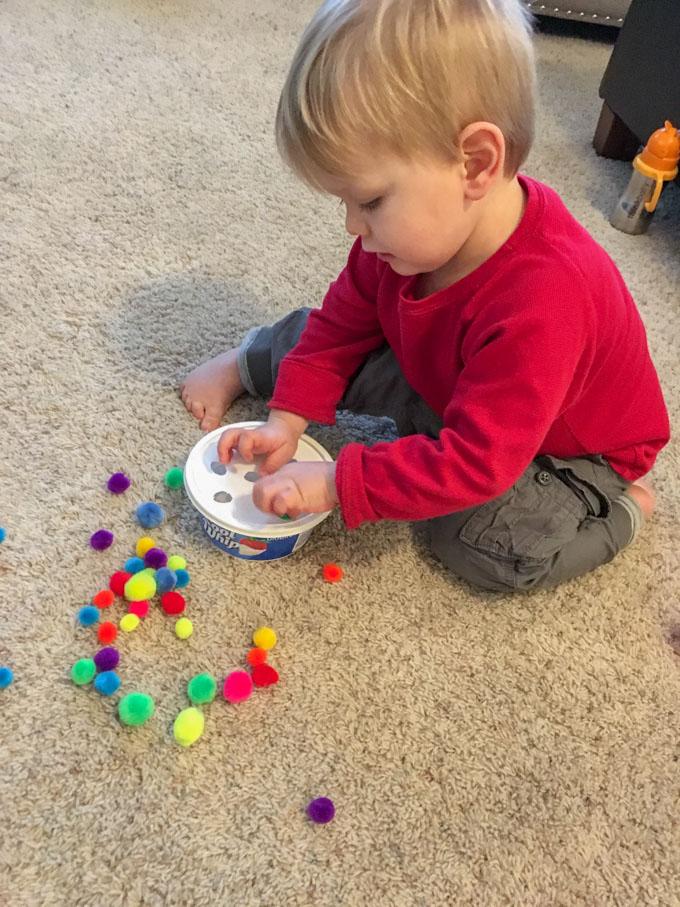
Pom Pom Push
Take a plastic container and cut holes in the top and let them push the pom poms through the holes.
Make it harder:
- Draw circles around the holes with a marker and let them push the blue pom poms through the blue hole, the green ones through the green holes, etc.
- Set a timer and see how many they can get in the container in 30 seconds or a minute.
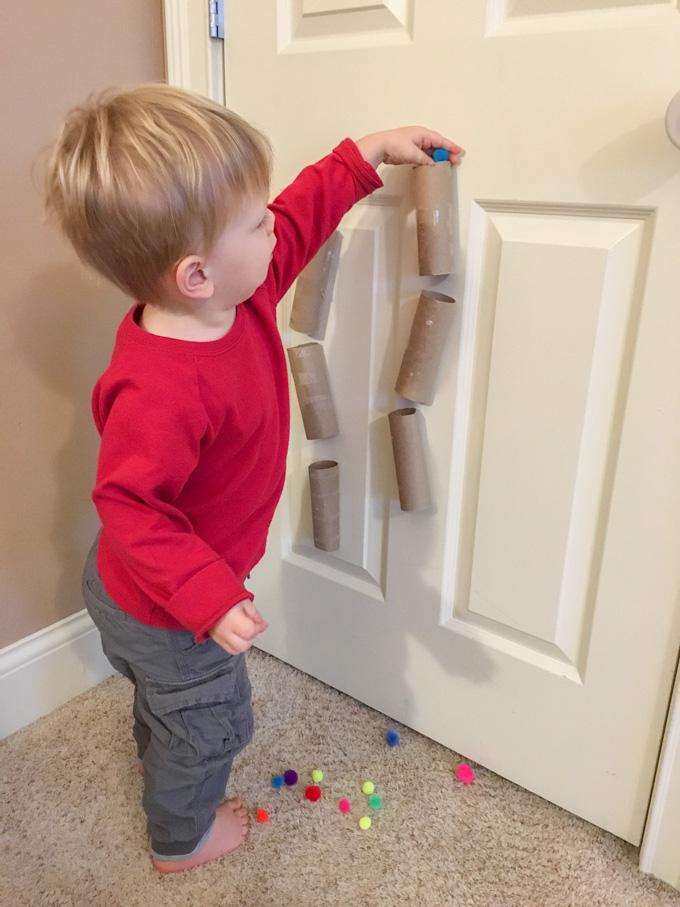
Pom Pom Drop
Save your toilet paper or paper towel rolls. Tape them to a door or wall and let them drop the pom poms through.
Make it harder:
- Give them tongs or a clothespin to make picking up the pom poms more challenging.
- Let them tape the tubes up and see if they can get the angles right so the pom poms go through all the tubes on the way down.
- You drop the pom poms from the top and see if they can catch them in the bottom in a small bowl.
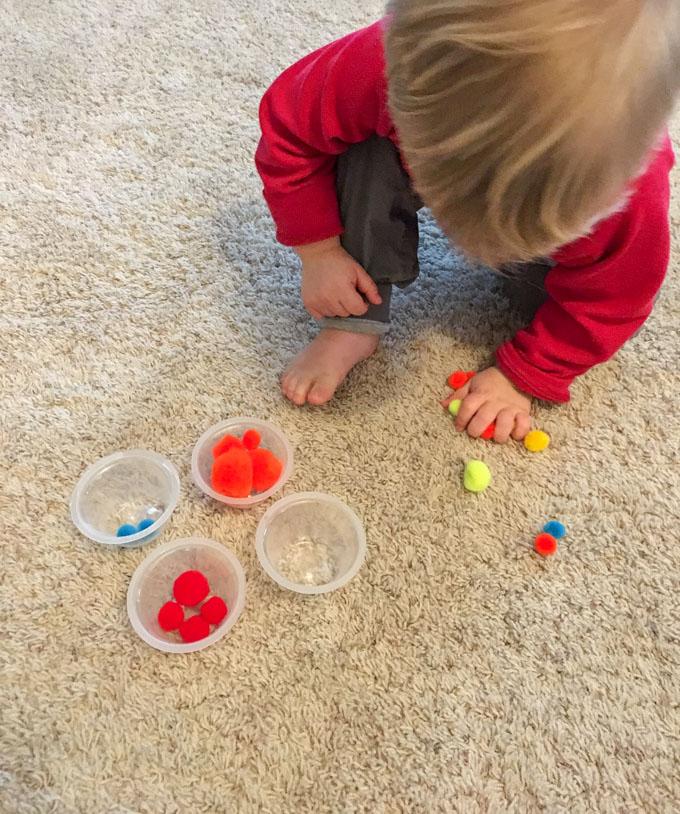
Pom Pom Sorting
Have them sort the pom poms into different containers by size or color.
Make it harder:
- Divide the pom poms in half and have a race to see who can sort theirs the fastest!
- Give them a clothespin to use to pickup and move the pom poms into the different containers.
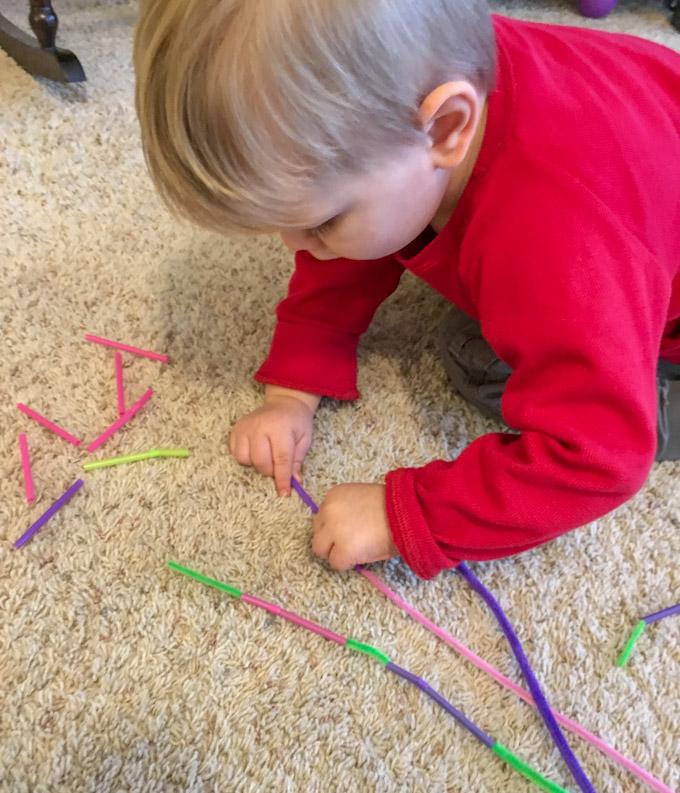
Straw Threading
Cut plastic straws into pieces. Let them thread the straw pieces onto the pipe cleaners.
Make it harder:
- Have them thread the pieces on in a pattern of colors.
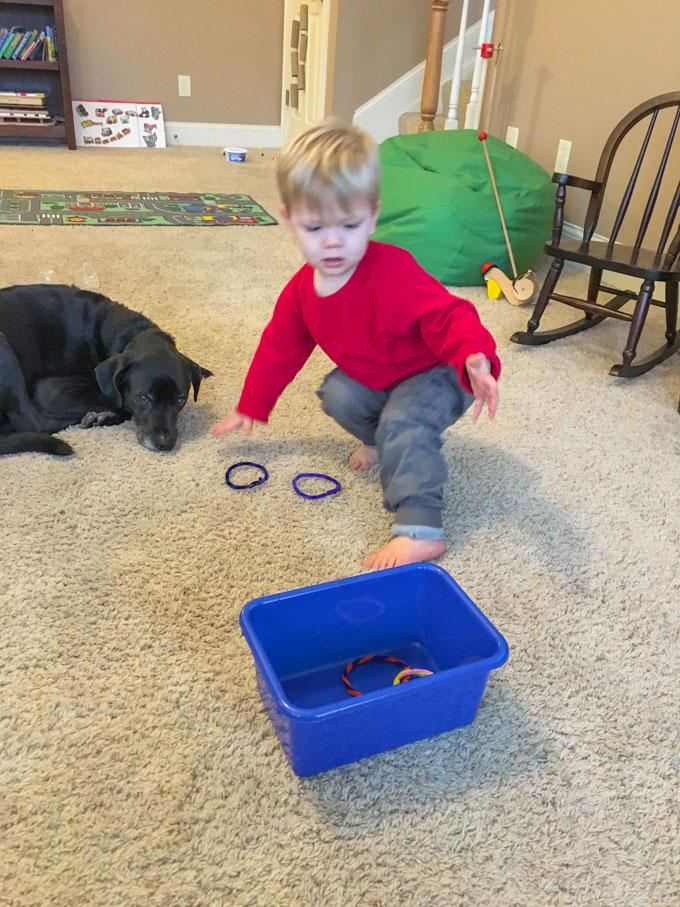
Ring Toss
Twist some pipe cleaners together to make rings and toss them into bowls or buckets.
Make it harder:
- Have them stand farther away.
- Set up multiple buckets and tell them to throw them into a specific one.
- See how many they can get in a row.
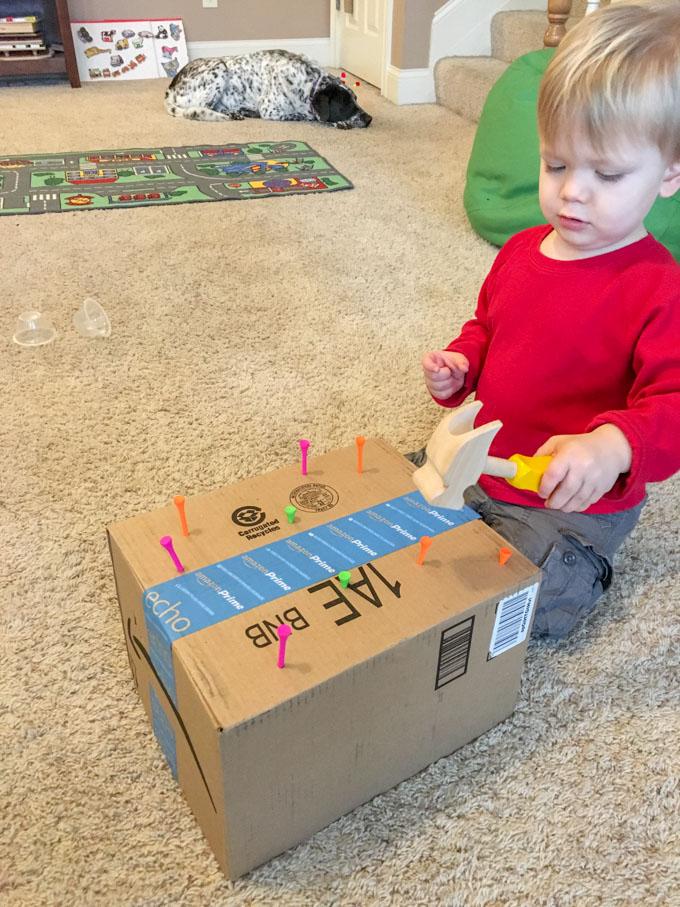
Golf Tee Hammering
Poke golf tees into a cardboard box and let them hammer them in.
Make it harder:
- Give them a smaller hammer.
- Tell them which color nails to hammer.
- Let them practice pulling them out and setting them back up again.
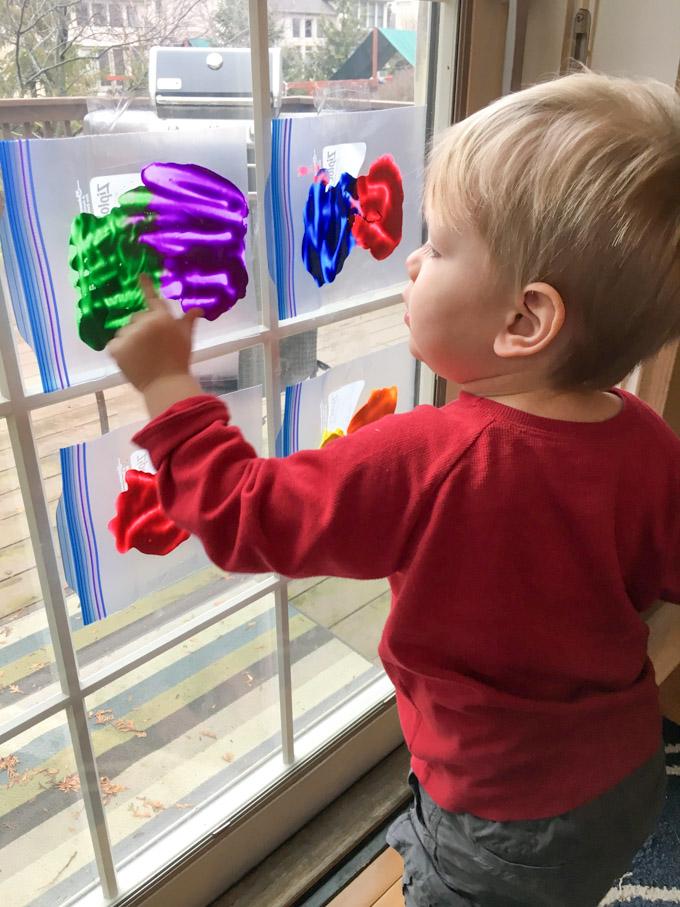
Ziploc Bag Fingerpainting
Put a few blogs of paint into Ziploc bags. Seal them tightly and tape to a window or table. Let them fingerpaint just like they would on a piece of paper.
Make it harder:
- Ask them to draw specific shapes or objects.
- Talk about what colors mix together to make new colors.
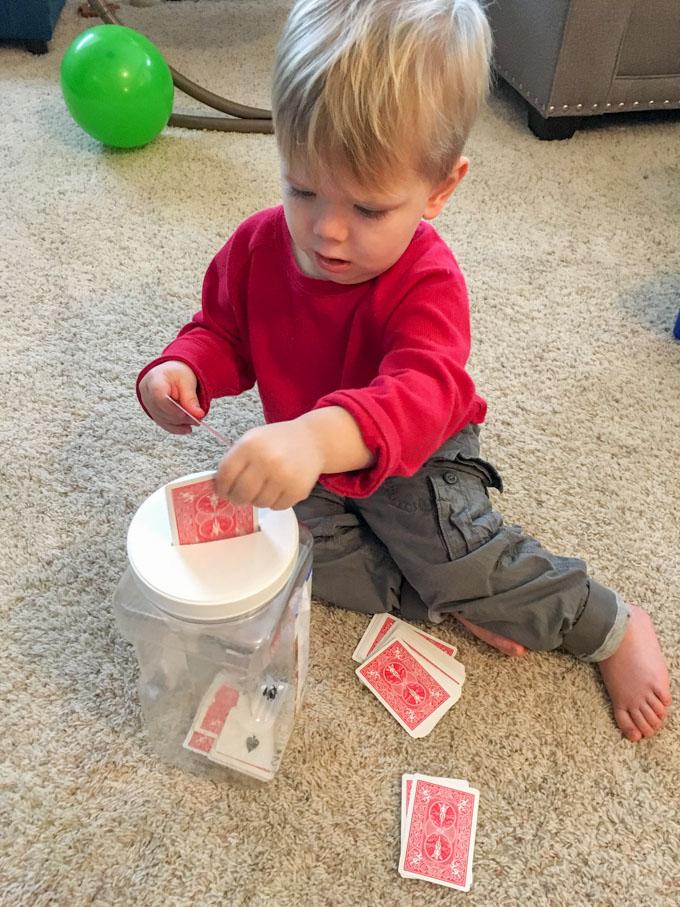
Card Slot Drop
Cut a slot in the lid of a container and have them drop the cards in.
Make it harder:
- Cut some holes as well and have them put q tips in.
- See how fast they can get them all in.
- Have them put them in by color or number.
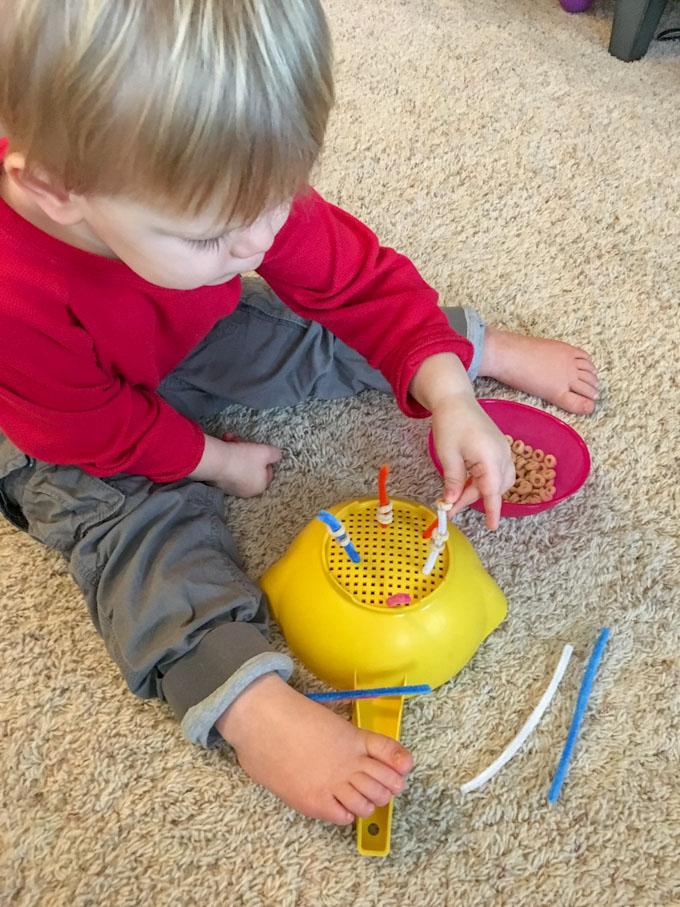
Cheerio Threading
Cut pipe cleaners in half and let them push them through the holes of a colander.
Make it harder:
- Give them Cheerios to thread onto the pipe cleaners.
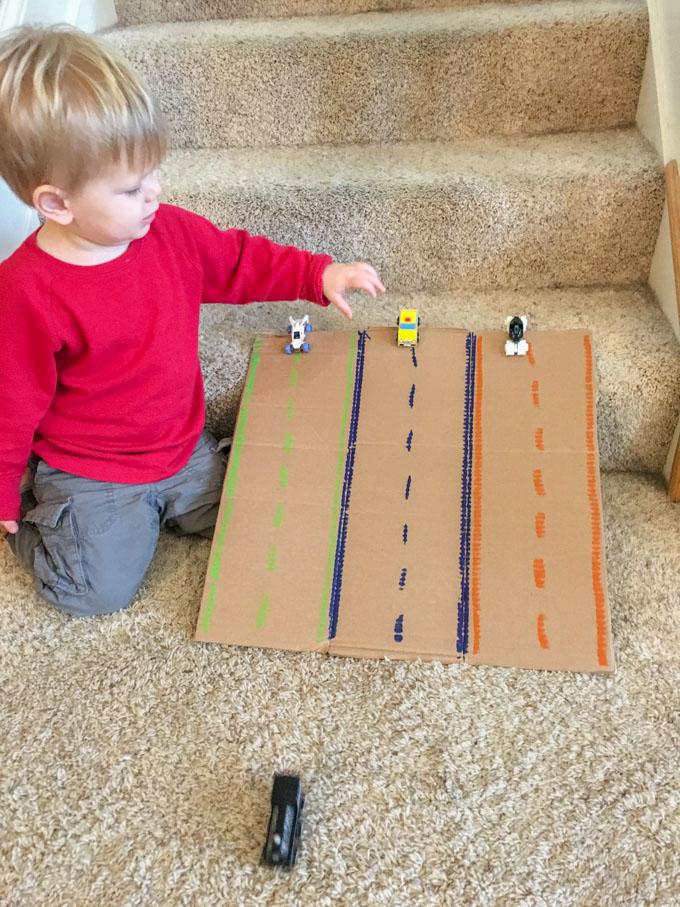
Car Ramp
Draw lanes on a cardboard box to make a car ramp. Let them race their cars down it.
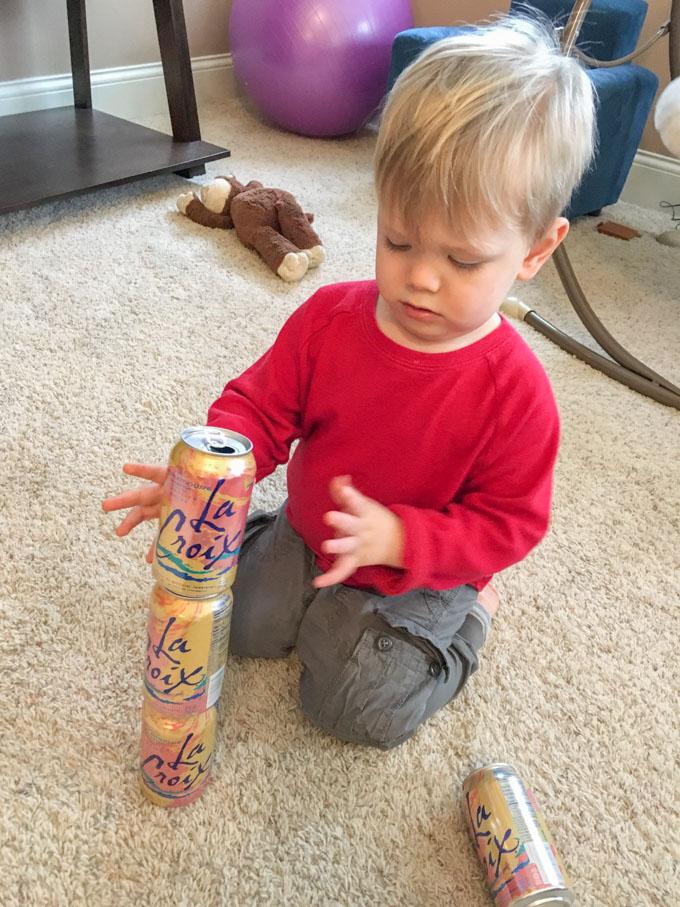
Fun with Cans
See how high they can stack them up. Set them up like bowling pins and let them bowl with a wiffle ball or tennis ball.
Like the ideas in the post? Be sure to pin it and share with your friends!
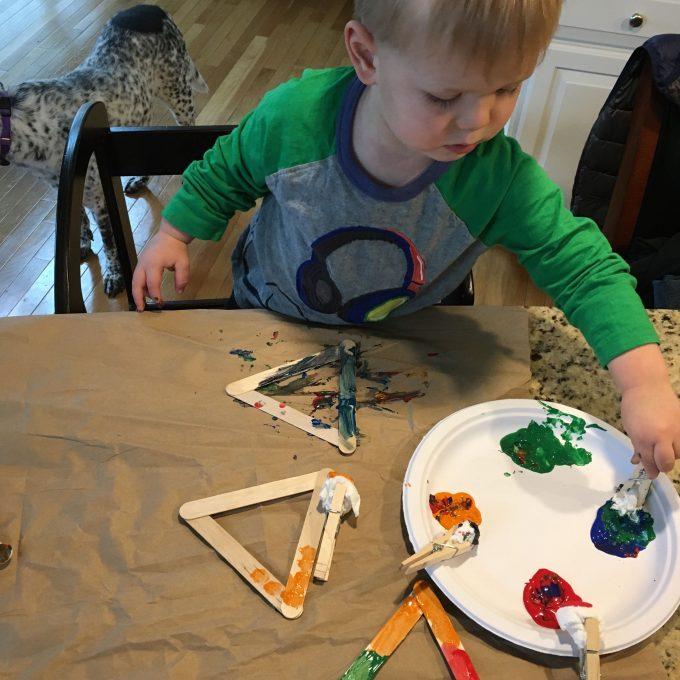
Clothespin Painting
Attached some cotton balls (or bunched up paper towels if you're out of cotten balls like i was) to clothespins and let them paint! Work on colors, shapes, etc.
Cooking
I wrote a post all about Kitchen Tasks For Toddlers!
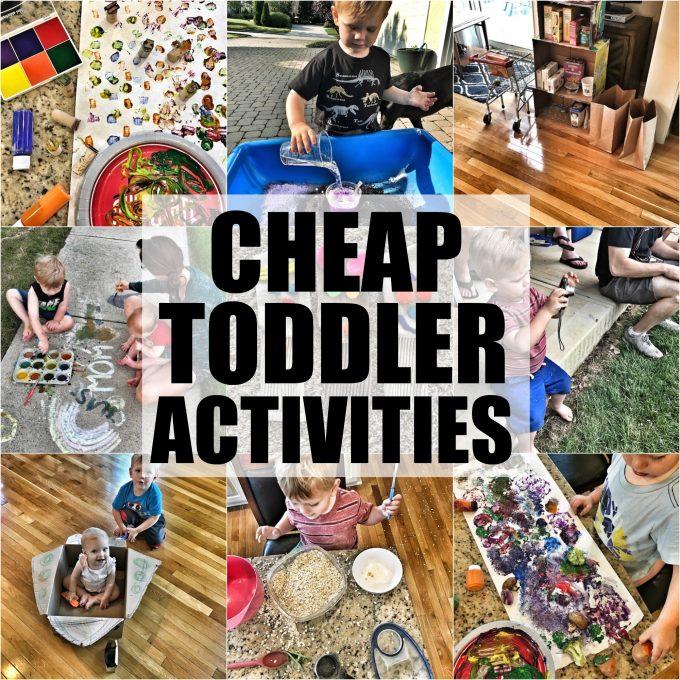
Whew! I think that's enough indoor activities for toddlers for one post. If you're looking for more ideas, check out this post filled with Cheap Toddler Activities!
Like the ideas in this post? Please pin it and share with your friends!
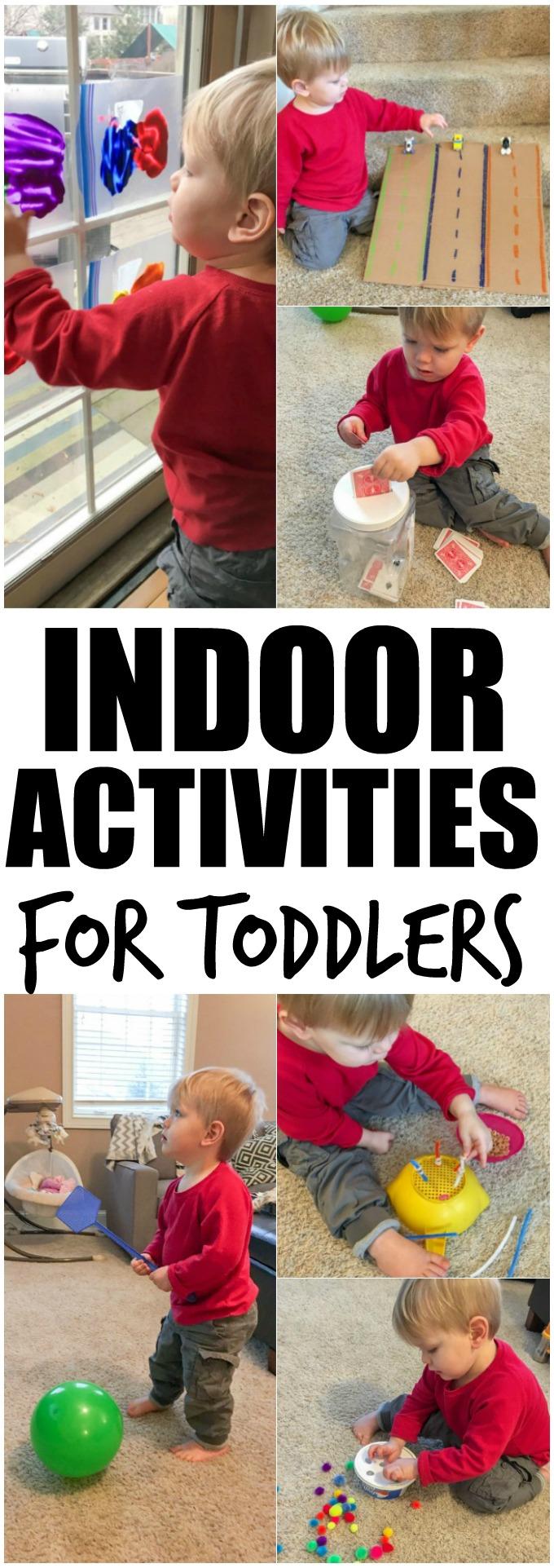
Let's chat:
What's your favorite indoor activity for the kiddos? I'm always looking for new ideas!
Enjoy!
–Lindsay–
Original Content: Indoor Activities For Toddlers
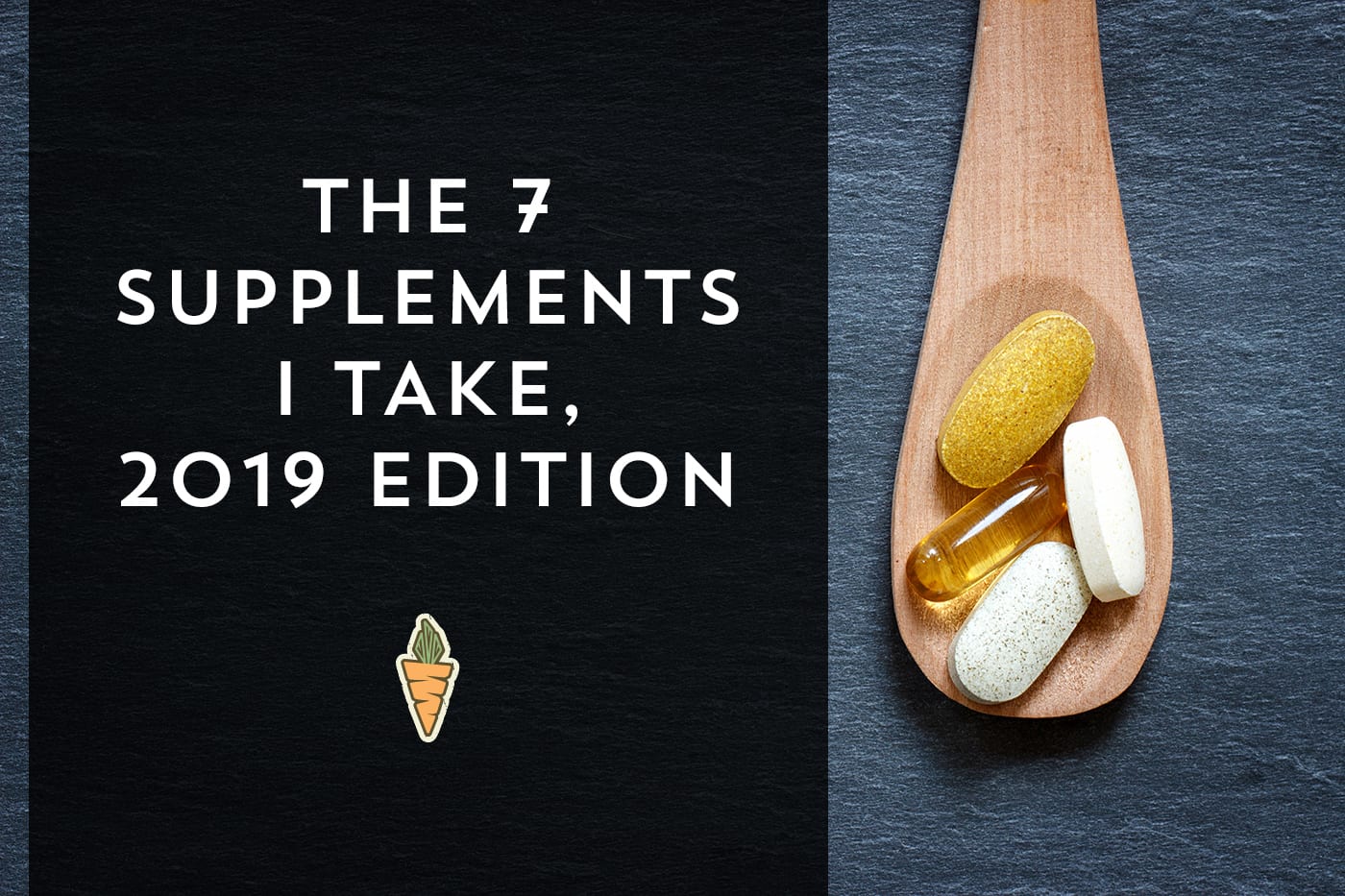
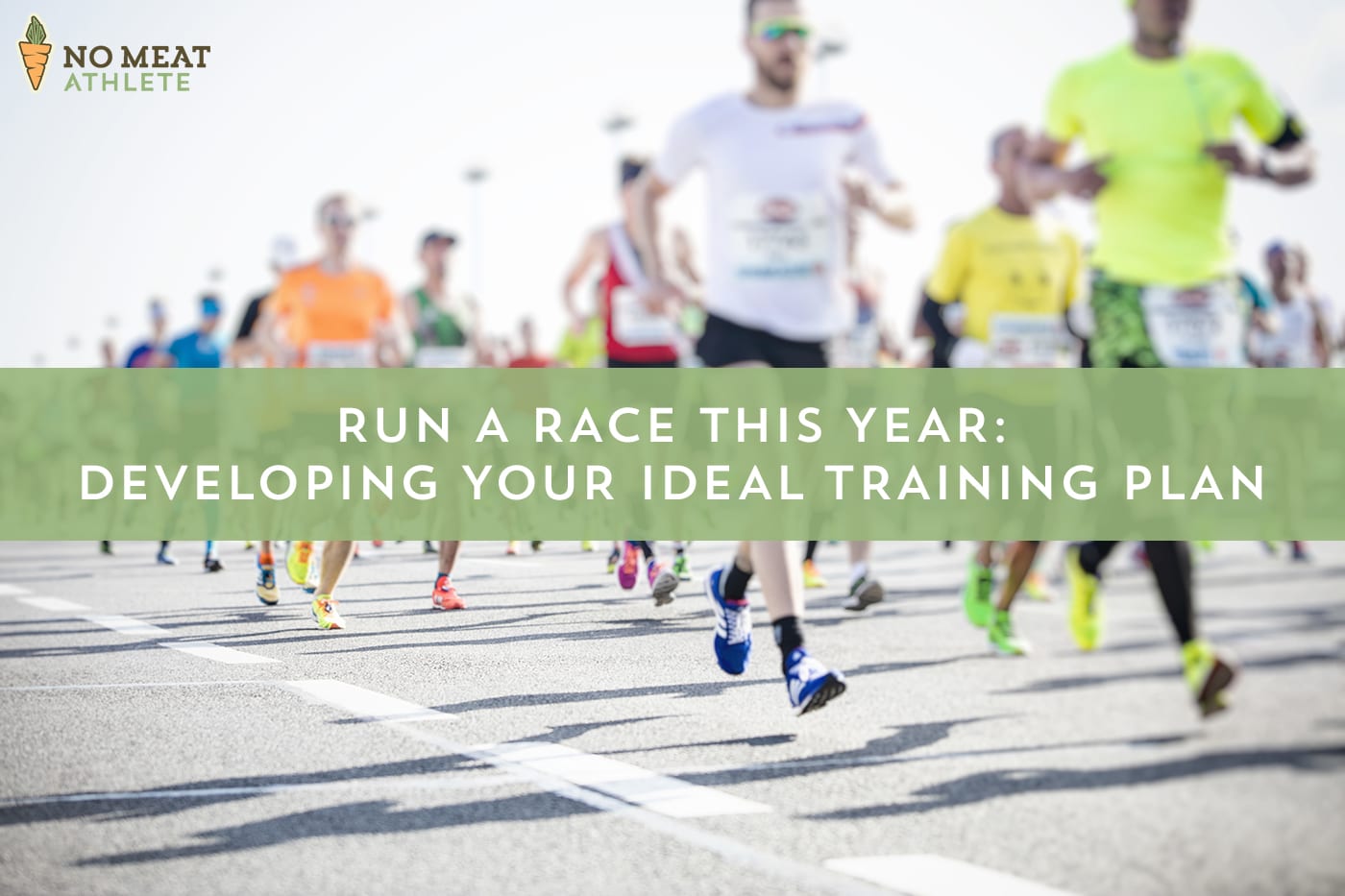







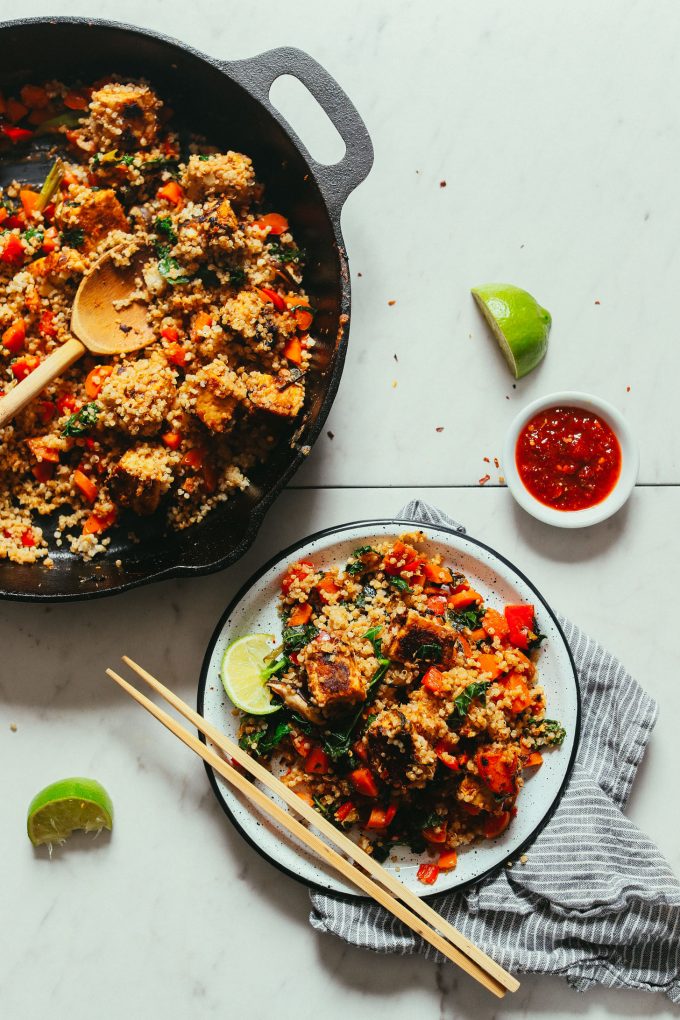
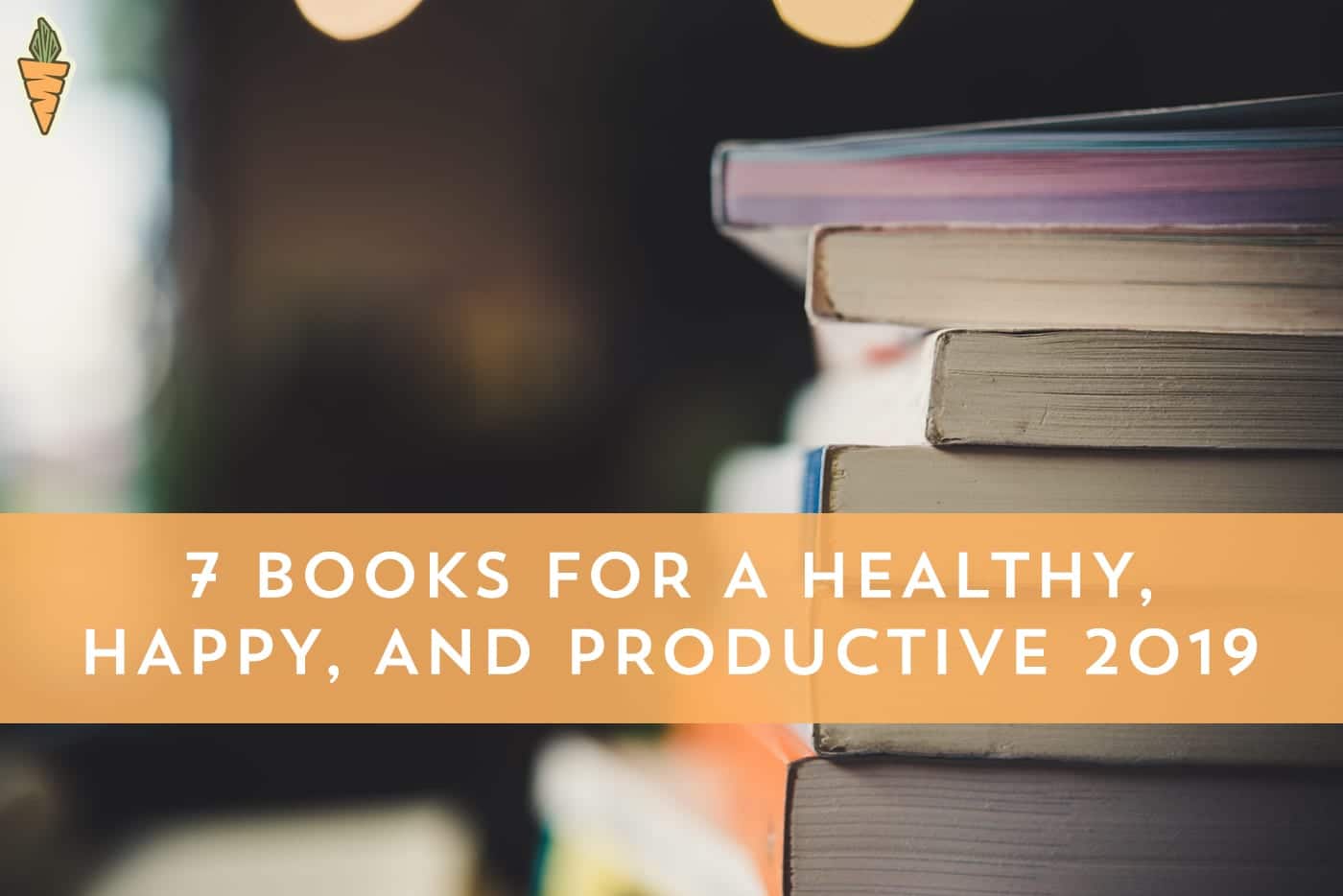
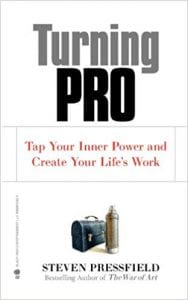 1.
1.  3.
3.  4.
4.  6.
6. 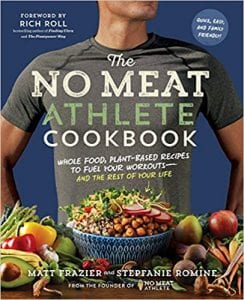 8.
8. 